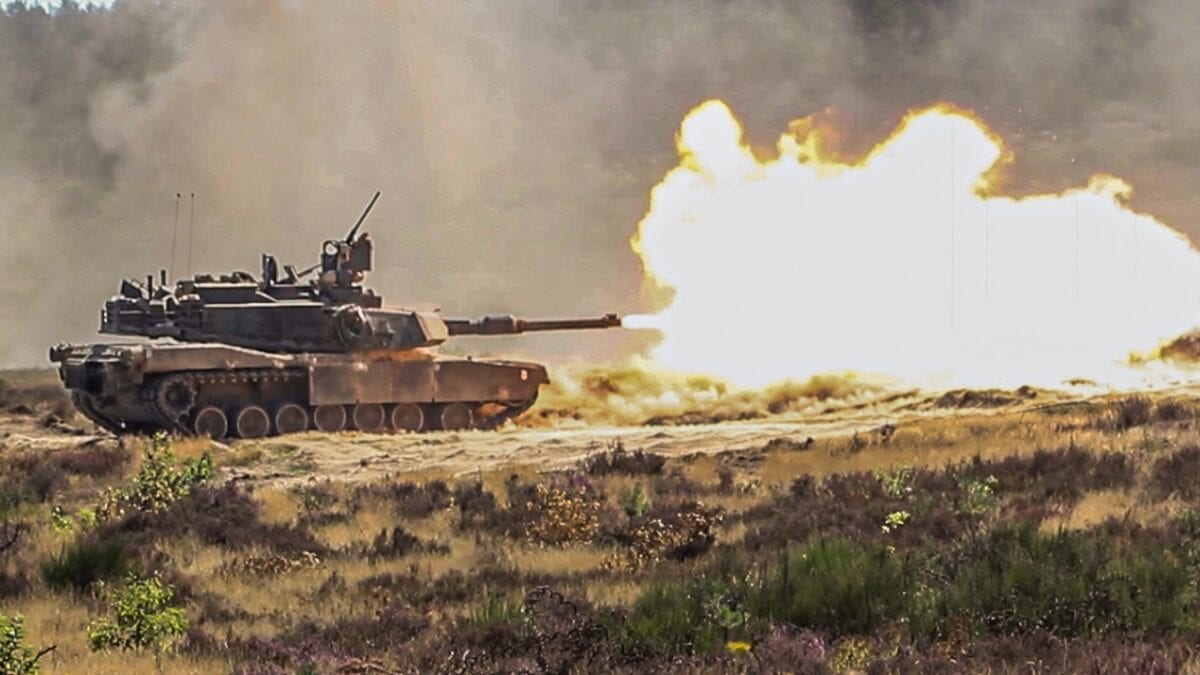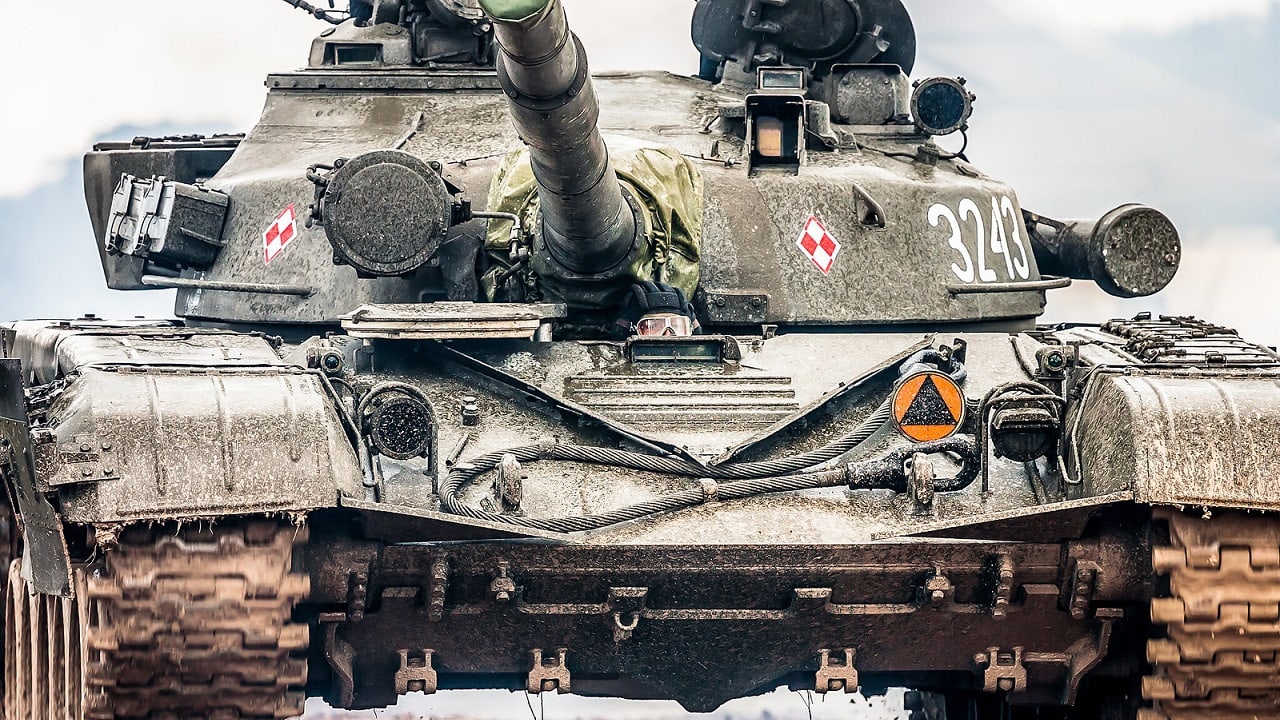Poland: How modernized is their military? “You’ve Come A Long Way, Baby” was a longtime slogan for the Virginia Slims cigarette brand, but it could also describe the Polish army, officially known as the Wojska Lądowe (“Land Forces”). During the Cold War, Poland was a key member of the Warsaw Pact, but the collapse of the USSR removed the stigma and bondage of being a Soviet satellite nation. Nowadays, Poland is a NATO member-state standing on the alliance’s eastern edge, and therefore serving as a bulwark against Russian revanchist ambitions. What’s more, Wojska Lądowe’s proud motto is Bóg, Honor, Ojczyzna (God, Honor, Fatherland), the first word of which would’ve been forbidden during the days of atheist Communism.
So how strong is Poland’s army today?
Poland: Decent Numbers, Lofty Ambitions
The total manpower of the Polish Land Forces currently sits at approximately 63,000, and it is divided among an armored cavalry division, three mechanized divisions, an aviation brigade, an airborne brigade, an air cavalry brigade, and ten so-called directly reporting regiments – three recon, four engineering, two CBRN, and one PSYOPS. Per the GlobalFirepower.com website, “For 2022, Poland is ranked 24 of 142 out of the countries considered for the annual GFP review. It holds a PwrIndx score of 0.4179 (a score of 0.0000 is considered ‘perfect’).”
The primary infantry rifle is the Fabryka Broni FB Beryl 5.56mm rifle, which replaces the Warsaw Pact’s AKM 7.62x39mm rifles. This gives Polish troops compatibility with the rifle caliber of their NATO allies, all while maintaining the legendary Kalashnikov standard of reliability.
Along those same lines, the P-83 Wanad pistol in the Russian 9x18mm Makarov caliber is being phased out in favor of the PR-15 RAGUN and WIST-94 pistols, both of which are chambered in NATO’s 9mm Luger cartridge.
Poland’s tank strength stands at 551 main battle tanks, 249 of which are the highly capable German-made Leopard 2. There are still 69 Soviet-era T-72s left in the arsenal. That tank was considered top-of-the-line in the 1970s and 1980s, but it lost a lot of luster after getting slaughtered by the M1 Abrams during Operation Desert Storm in 1991. Now, it is taking grievous losses during the war in Ukraine.
Polish Defense Minister Mariusz Błaszczak has made it clear that he does not intend for his country’s army to rest on its laurels. Błaszczak declared in late July that Poland will have “the most powerful land forces in Europe” thanks to ongoing investments by the government, which recently raised the defense budget to 3% of GDP – one of the highest levels in NATO – and aims to further increase it to 5%. Notes from Poland chief editor Daniel Tilles elaborates further:
“Since Russia’s invasion of Ukraine, Warsaw has embarked on a military spending spree. This week, it confirmed a deal with South Korea that will see Poland acquire almost 1,000 tanks and over 600 howitzers. It has also recently agreed the purchase of 250 new and 116 used Abrams tanks from the US…For comparison, Germany has 266 battle tanks in service and France 406, according to Global Firepower, which collates data on the strength of military forces.”
GROM: A Special (Operations) Breed
The most reputable unit of the Polish army is their elite special forces unit, the JW GROM (Military Unit Group for Operational Maneuvering Response), which was stood up in 1990 and received training from America’s Delta Force and the British Special Air Service. GROM commandos put themselves on the proverbial map among Western observers with their contributions to Operation Iraqi Freedom in 2003 – especially their key role in the capture of the Port of Umm Qasr.
GROM operators have earned the nickname of “The Surgeons” thanks to their extensive medical training and knowledge, as well as their surgical ability to coordinate and execute special operations. Understandably, their total numerical strength is classified.
Poland’s Military: My Personal Observations
My own personal observations of the Polish Land Forces personnel are admittedly limited, but I include them herein for whatever they’re worth. While I never actually trained with them, I got a fair amount of personal interaction with their personnel assigned to the Kosovo Force (KFOR) multinational peacekeeping force while I was a contractor with DynCorp (now part of Amentum) at Camp Bondsteel, Kosovo.
My interactions with the Wojska Lądowe KFOR contingent basically consisted of watching them safely clear their weapons at the clearing barrels situated at the base entry control points, socializing with them at the base food court, and attending Catholic Mass celebrated by their chaplain. This is admittedly very anecdotal, but all the Polish soldiers I either spoke with in-person or observed from a distance struck me as very professional, squared-away, and with a high state of morale.
Currently there are 27 Troop Contributing Nations in KFOR, combining for a total troop strength of 3,735. Poland’s contribution is 247 soldiers, which equates to 6.6% of the total.

U.S. Army M1 Abrams Main Battle Tank variation fires at a target at Bucierz Range at Drawsko Pomorskie Training Area, Poland, August 11, 2020. DEFENDER-Europe 20 was designed as a deployment exercise to build strategic readiness in support of the U.S. National Defense Strategy and NATO deterrence objectives. In response to COVID-19, DEFENDER-Europe 20 was modified in size and scope. Phase I of the modified DEFENDER-Europe 20 was linked to exercise Allied Spirit, which took place at Drawsko Pomorskie Training Area, Poland, June 5-19 with approximately 6,000 U.S. and Polish Soldiers. In phase II of the modified DEFENDER-Europe 20, a U.S.-based combined arms battalion will conduct an emergency Deployment Readiness Exercise to Europe July 14-Aug. 22.
These observations, combined with the external research I conducted for this article, give me a very high degree of confidence that should the unthinkable happen – should Vladimir Putin launch a conventional invasion of NATO lands – the Polish Armed Forces will be willing and able to fight the scourge.
Christian D. Orr is a former Air Force Security Forces officer, Federal law enforcement officer, and private military contractor (with assignments worked in Iraq, the United Arab Emirates, Kosovo, Japan, Germany, and the Pentagon). Chris holds a B.A. in International Relations from the University of Southern California (USC) and an M.A. in Intelligence Studies (concentration in Terrorism Studies) from American Military University (AMU). He has also been published in The Daily Torch and The Journal of Intelligence and Cyber Security. Last but not least, he is a Companion of the Order of the Naval Order of the United States (NOUS). In his spare time, he enjoys shooting, dining out, cigars, Irish and British pubs, travel, USC Trojans college football, and Washington DC professional sports.

